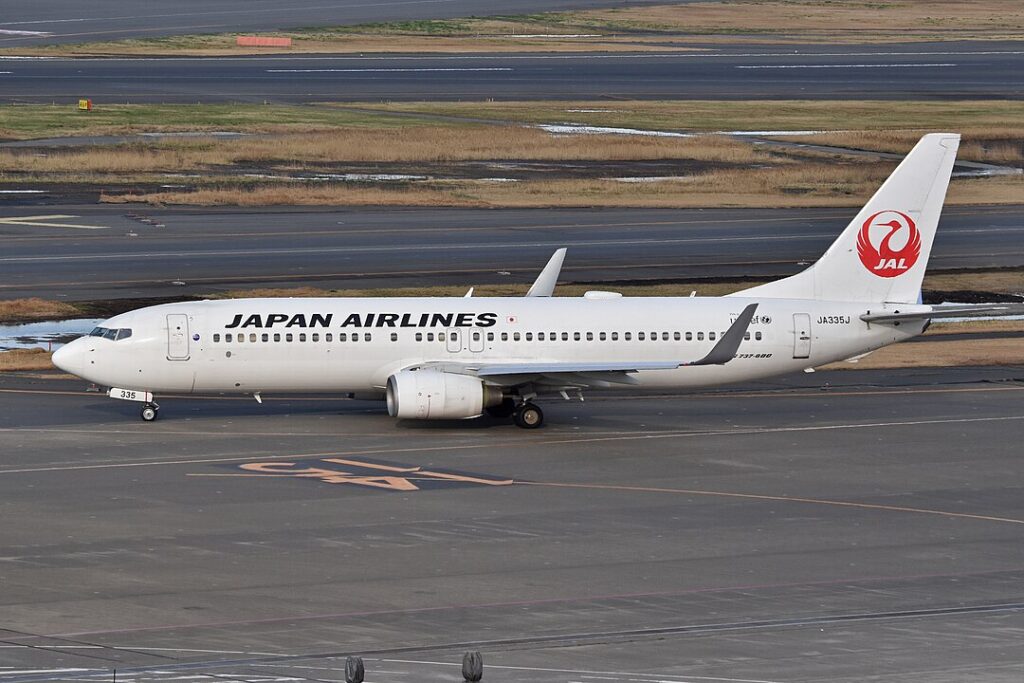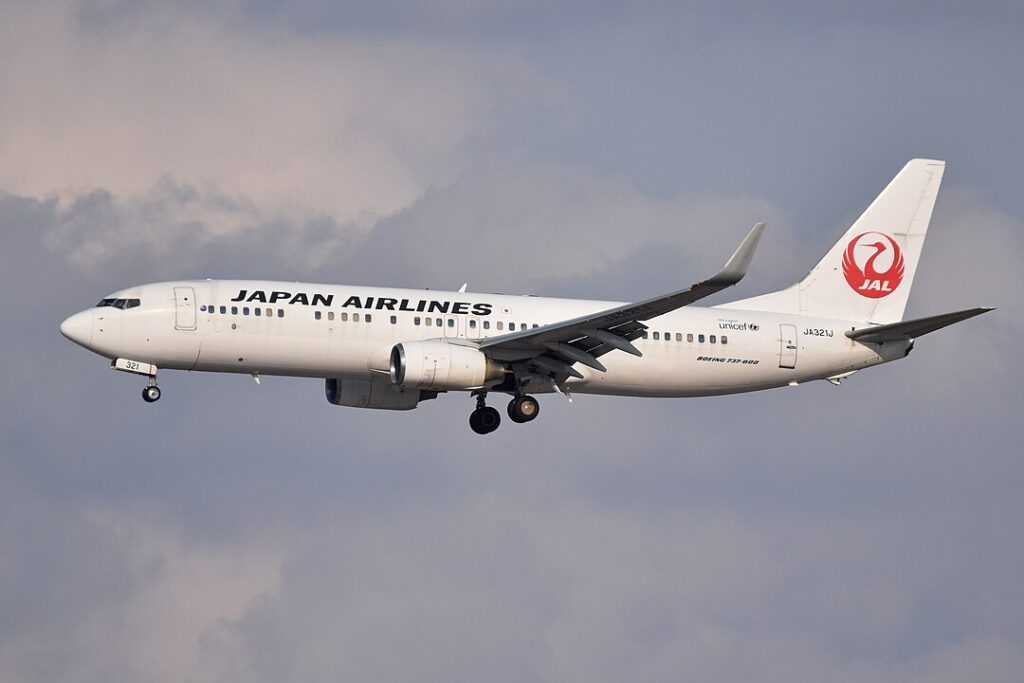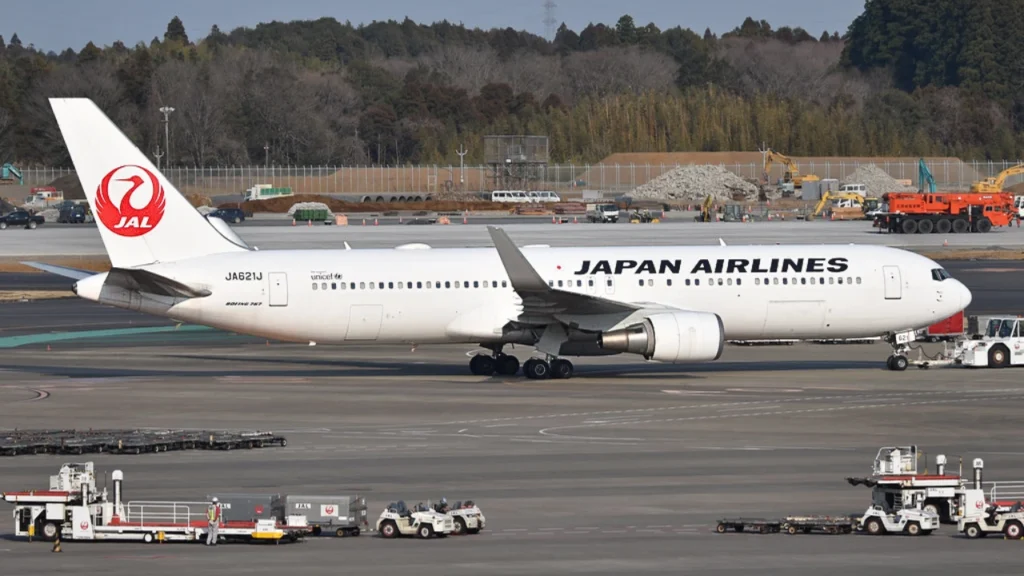
TOKYO- A Japan Airlines (JAL) flight departing from Tokyo Haneda Airport (HND) bound for Kitakyushu (KKJ) aborts takeoff after veering significantly off the runway’s centerline on April 7, 2025.
The incident involved Japan Airlines flight JL377, a Boeing 737-800 with 80 passengers and crew on board. The aircraft began its takeoff roll nearly 30 meters away from the runway’s centerline, resulting in contact with ground lighting infrastructure.
 Photo: By Alan Wilson from Peterborough, Cambs, UK – Boeing 737-846 ‘JA335J’ Japan Airlines, CC BY-SA 2.0, https://commons.wikimedia.org/w/index.php?curid=78030114
Photo: By Alan Wilson from Peterborough, Cambs, UK – Boeing 737-846 ‘JA335J’ Japan Airlines, CC BY-SA 2.0, https://commons.wikimedia.org/w/index.php?curid=78030114Japan Airlines Flight Aborts Takeoff
On Monday at approximately 7:10 PM, Japan Airlines Flight 377 (JAL 377), a Boeing 737-800, entered Runway D at Haneda Airport via Taxiway D2.
Cleared for takeoff by air traffic control, the 35.8-meter-wide aircraft began its northeast-bound run on the 2,500-meter-long, 60-meter-wide runway.
However, it quickly deviated nearly 30 meters left of the centerline, running with its left main landing gear and wing off the runway for about 300 meters.
The aircraft, accelerating to 90-130 kph, was not aligned with the white centerline lights but instead tracked closer to the white runway edge lights on the left. Realizing the deviation, the JAL captain aborts takeoff, attempting to steer back toward the center.
Before stopping, the plane struck a 70-centimeter blue taxiway light near Taxiway D3, prompting the emergency halt.
Authorities suspect the pilots mistook the runway edge lights for the centerline, a theory supported by the crew’s statement about unusually dim centerline lighting.
Runway D had been undergoing repairs since the previous month, with some centerline lights sequentially deactivated.
On the night of the incident, lights near Taxiway D2 were off, while those from D3 onward remained operational.
The ministry had informed relevant parties of these changes. The captain reported that the centerline appeared darker than usual, and the crew noticed a blue taxiway light slightly left of their path, alerting them to the drift.
This suggests that partial lighting outages may have contributed to the confusion during takeoff.
 Photo: By Hawkeye UK – https://www.flickr.com/photos/65001151@N03/48515051067/, CC BY-SA 2.0, https://commons.wikimedia.org/w/index.php?curid=81317446
Photo: By Hawkeye UK – https://www.flickr.com/photos/65001151@N03/48515051067/, CC BY-SA 2.0, https://commons.wikimedia.org/w/index.php?curid=81317446Emergency Stop and Operational Impact
No injuries occurred among the 80 passengers and crew aboard JAL 377. Runway D was closed for 50 minutes following the incident, resuming operations after safety checks.
Another aircraft was assigned to complete Flight 377’s journey to Kitakyushu.
The Land, Infrastructure, Transport, and Tourism Ministry, alongside other authorities, continues to investigate, focusing on pilot perception and runway maintenance protocols.
 Photo: Alan Wilson | Flickr
Photo: Alan Wilson | FlickrBottom Line
This incident highlights the importance of clear visual indicators and pilot situational awareness, especially during low visibility conditions or partial runway lighting scenarios.
Regulatory authorities may review existing runway lighting protocols and pre-flight briefing procedures when infrastructure work is underway.
Japan Airlines has pledged full cooperation with the investigation and emphasized its commitment to passenger safety and operational transparency.
Stay tuned with us. Further, follow us on social media for the latest updates.
Join us on Telegram Group for the Latest Aviation Updates. Subsequently, follow us on Google News
Delta and Japan Airlines Sued by Passengers Amid Plane Crash at Seattle
The post Japan Airlines Flight Aborts Takeoff at Haneda After Runway Deviation, Hits Light appeared first on Aviation A2Z.
















